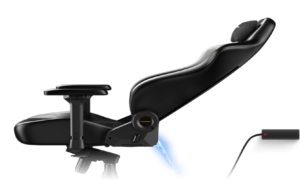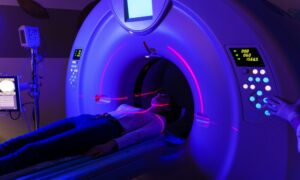The use cases for artificial intelligence (AI) have exploded in recent years. One exciting development is the proliferation of AI image generators, which can create custom images for multiple purposes. Anyone can use these image generators; the technology is fun to play around with, intuitive, and easy to use.
What is an AI image generator?
AI image generators create images of different styles, designs, and formats based on an algorithm. Generated photos can range from simple drawings to complex photorealistic images, depending on the specific algorithm and training data.
Image generation is the process of creating images from scratch. Generators use artificial intelligence to create photos that resemble real-world objects. AI image generation involves color mixing, matching, and applying various light intensities.
How do AI Image generators work?
Artists who want to leverage an AI image generator for their photos must learn how to use the technology effectively to harness its full potential. AI image generators work depending on the specific algorithm and generated image type. The technical process comprises several approaches, including generative adversarial networks (GANs) and Variational Autoencoders (VAEs). These methods have their strengths and capabilities to suit different applications.
AI image generation involves using evolutionary algorithms or reinforcement learning. Here, the user trains the AI to optimize aesthetically pleasing generated photos similar to a given input. The specific details of how the generator works depend on the particular algorithm and input training data.
One popular approach is a generative adversarial network (GAN). A GAN consists of two neural networks: a generator and a discriminator. The generator network creates new images, while the discriminator network uses its training to distinguish between real and generated images.
A Variational Autoencoder (VAE) is a neural network trained to compress and reconstruct images into a lower-dimensional latent space. The VAE generates new ideas by sampling from the latent area and reconstructing the image.
Features of best AI art generators
AI art generators help create various artworks, including paintings, drawings, and digital art. In addition, different AI art generators excel in other fields and applications. Some factors to consider when evaluating AI art generators include the quality and diversity of the generated artwork and the speed, efficiency, and general capabilities of the AI art generator.
An art generator acts on a given text prompt to create a wide range of photorealistic images, surrealist artwork, and abstract designs. It does this by amplifying the features that it has learned to recognize. An image generator can generate abstract patterns and surreal landscapes. It allows users to breed new images by combining and modifying the existing photos.
Ultimately, there’s no “best” AI art generator. Preferences will depend on the specific needs and goals of the user. However, for anyone looking to choose a particular generator, it can help to try out a few and compare their capabilities and outputs to determine the best fit for a specific project or application.
Benefits of using AI image generators
AI image generators are flexible, fast, and easy to use. Artists and designers use computer programs to create images, but these programs need improvement in their ability to create real-life photos. Artificial intelligence provides techniques for building intelligent systems. These techniques include machine learning and neural networks.
Machine learning allows computers to learn from data without being explicitly programmed. Instead, neural networks use algorithms inspired by biological systems to solve problems like recognizing patterns in data or making predictions based on experience.
AI image generators can make it easier for artists and designers to create new images quickly. The image generator makes it possible to generate new colors based on existing ideas. The artist or designer can modify existing images into new designs that they can turn into an actual product or piece of art.
AI image generators help create realistic images for marketing campaigns. It is easier to use this technology than traditional photography methods. You do not need to hire a photographer or take pictures to get an image that looks like what you want. The best part is that you will get excellent results without spending too much on tools and acquiring knowledge.
An AI image generator allows you to choose from thousands of options for background and lighting settings. As a result, you won’t worry about ensuring perfection or spending a lot of time adjusting images to look realistic. Instead, you only drag and drop items from your computer onto the interface and click the respective buttons.
AI image generators can generate multiple variations of an image, allowing you to choose one that best suits your needs. As a result, you don’t have to continuously change your design over and over, which saves time and money.
AI-generated photos and videos can help you create a reputation for yourself and promote your products or services. They are helpful for video marketing, where high-quality images are always required. As a result, the quality of your photos and videos is better, and you will have more options for creating promotional materials for your business or brand.
The potential of AI art generators is revolutionary
AI image generators have the potential to revolutionize the field of computer graphics by providing new tools for artists and designers to create and modify images. For example, they can generate photorealistic images for film and video games.
As mentioned above, you can use an AI image generator to create realistic, high-quality imagery or artwork for marketing and advertising. What is clear about AI art generators is that this technology isn’t going anywhere. We’re just beginning to realize the potential of artificial intelligence, including in the art world. And while AI will never replace human-made art, this accessible technology can complement and supplement traditional creativity and established hierarchies.



































